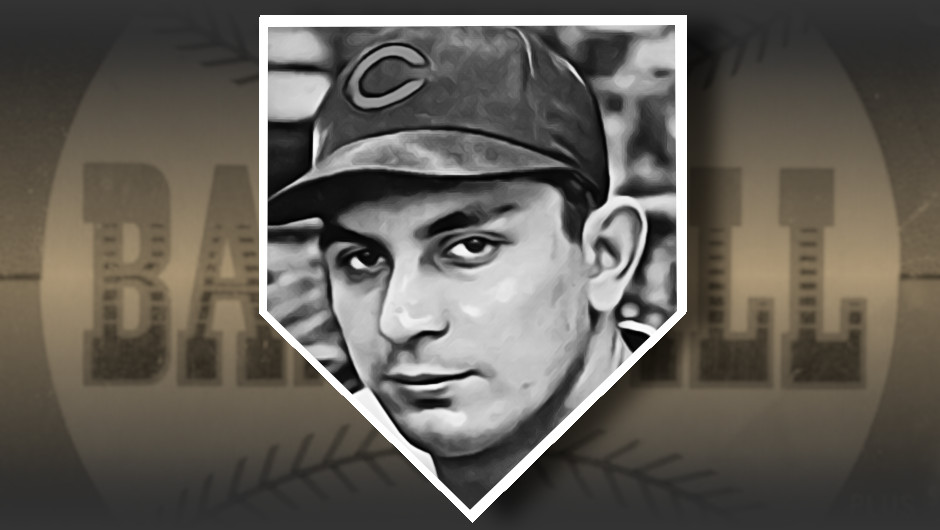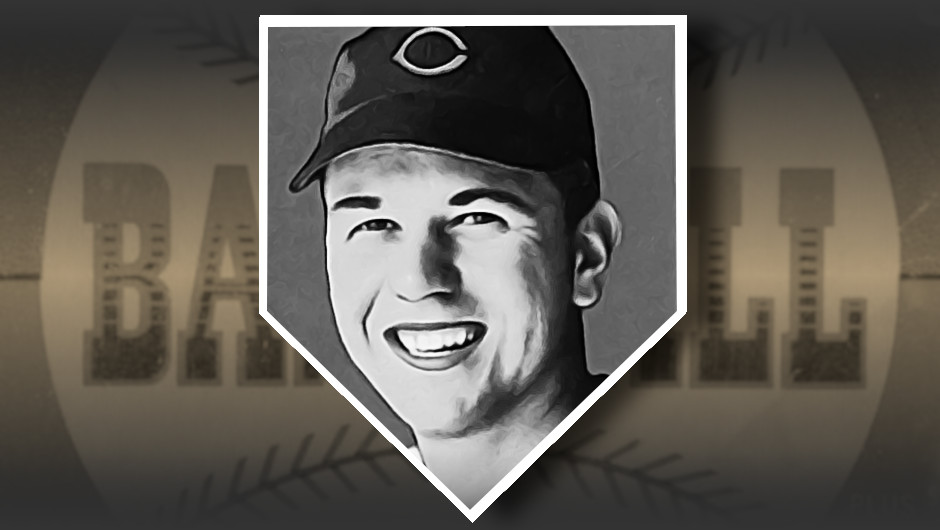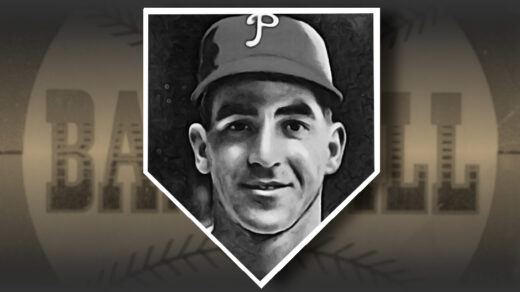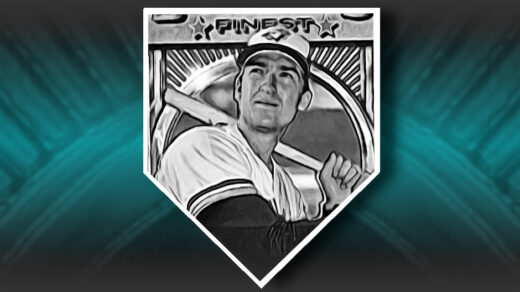Bob Rush was the quintessential good pitcher on a bad team. He seemed to take it in stride, which is a quality one should look for if trying to sign players to play for the Chicago Cubs at almost any point in the 20th century. By the time Rush arrived in the majors in 1948 the performance of the Cubs was already a long running joke. With just 18 innings and six appearances under his belt, he became a component of Norman Rockwell’s take on the subject.

Rockwell attended a Cubs/Braves doubleheader in Boston in May 1948. Prior to the game he identified fans entering the ballpark that looked likely to produce expressive faces for a painting he hoped to produce of the event. Once selected, these fans were invited to reserved seats behind the visitors’ dugout and posed for the artist. A group of Chicago players (and a batboy) sit in the foreground, seemingly resigned to their fates. A rookie Bob Rush is the player seen at the far left of the painting, holding his chin with his right hand.
Scenes like this would become common for the best pitcher the Cubs had for a generation. Rush posted only one winning season with the Cubs and finished his career with an overall record of 127-152. He did, however, notch nearly 2 wins above replacement per 100 innings of work. That is an impressive level of efficiency, akin to the performances of Cy Young and Fergie Jenkins.
Rush relied almost exclusively on his fastball and a reputation for throwing inside. Batters were skittish, as he could throw gas while exhibiting the same lethal aim he had used as a machine gunner in the battlefields of WW2.
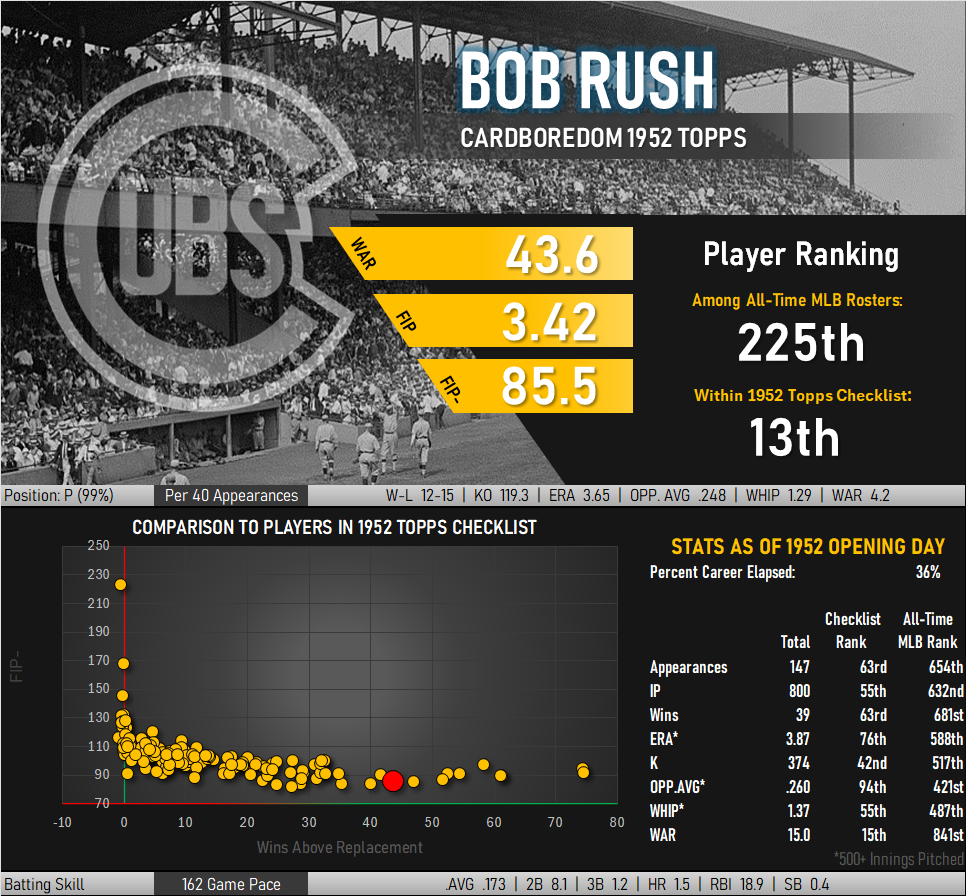
A Pitcher’s Duel of Another Sort
Rush isn’t the best pitcher to appear in the 1952 Topps set, but he did hold his own in more ways than one against one of the players vying for that title. In yet another Cubs/Braves matchup, Rush was the winning pitcher in a 2-1 victory opposite Warren Spahn. While the pitching was undeniably top-notch on both sides, it was the hurlers’ running game that captivated the audience. Both pitchers reached the basepaths and promptly stole the next base.
This Pitcher’s Most Interesting Card
Honestly, you have to have a pretty nice card in hand to beat any player’s 1952 Topps card for the title of most interesting card. Rush’s ’52 Topps would take the title if not for a rather obscure issue that followed a few years later in 1955. That was the year that the Robert Gould All-Stars were produced, filling a toy store niche that would go on to be filled decades later by Starting Lineup action figures.
Recognized as one of the more talented pitchers in the game, Rush is one of the players selected to fill out a hypothetical All-Star roster of 28 players. Each is represented in the set by a three inch figurine made of white plastic. Accompanying each figure is a baseball card designed to be folded and used as a display stand for the toy. These cards feature prepunched holes, notches for rubber bands, and a scored line to aid setup of the display. These cards are much harder to find than his traditional Topps and Bowman issues, making them the most challenging issue connected with Rush’s baseball career.
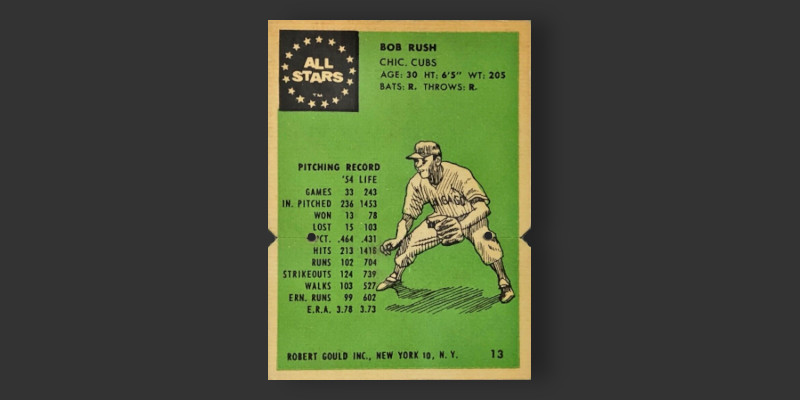
Bob Rush in 1952 Topps
Back to his second most interesting card. Rush appears in the third series of ’52 Topps, and the text on the back mentions the fact that in addition to playing Major League Baseball he is an active college student at the University of Indiana. Issued as the season approached the halfway mark, this card would have been one of the highlights in third series packs. Rush was named to the National League All-Star squad and ended up the winning pitcher of a rain-shortened 5 inning affair.

I picked up my card at last year’s Chantilly card show. It is one of my favorites from a well-stocked dealer that specializes in vintage commons for set collectors. I am planning to attend again in a few weeks and will make a point visit his table and put a serious dent in my ’52 set progress.


